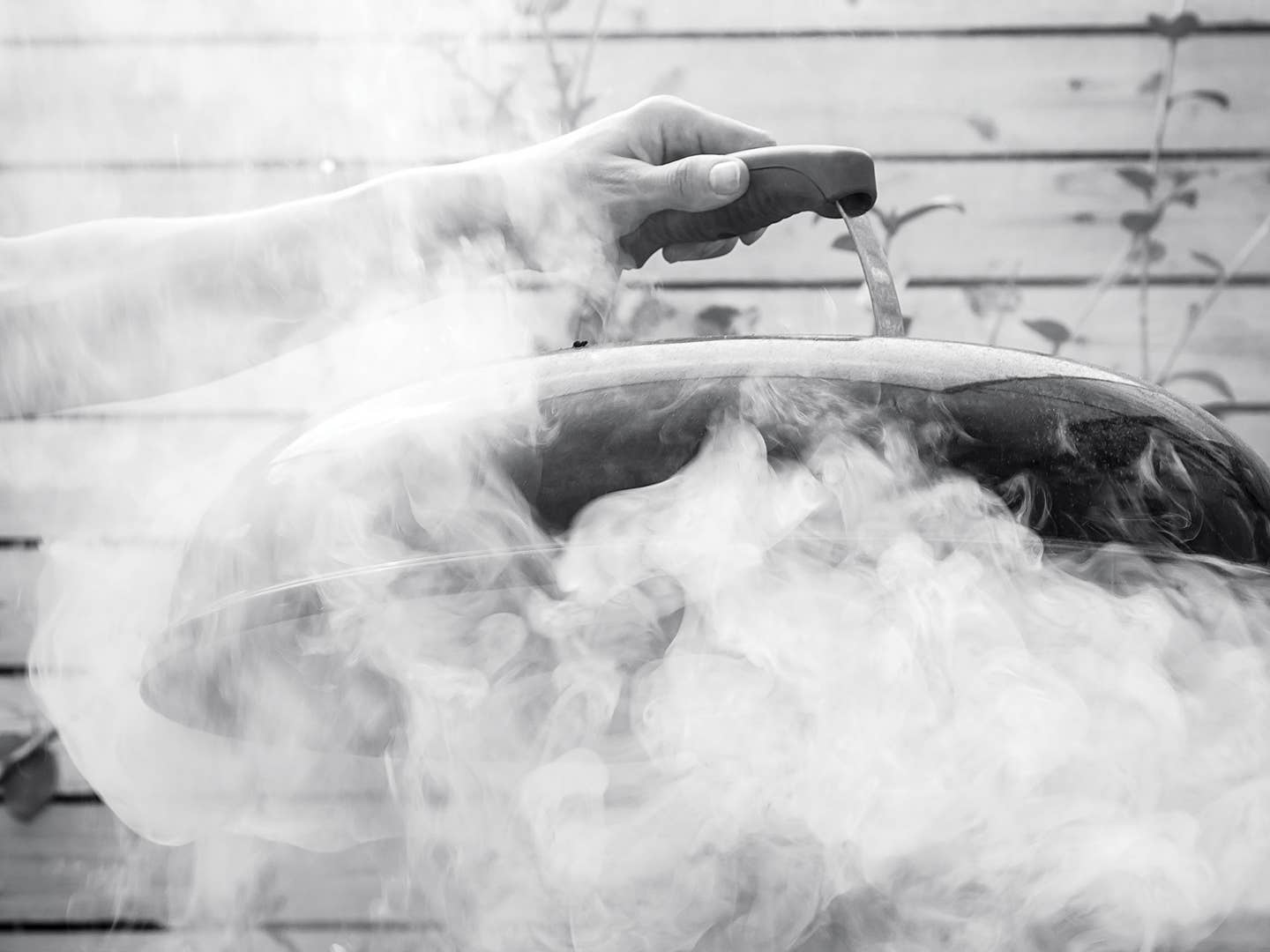
The Science of Smoke
Harold Mcgee on the facts behind this essential but ethereal ingredient
Smoke is a funny thing. Light as air, it floats up in a fragrant plume and then drifts away, bestowing the taste of wood in its wake. So what exactly is this aromatic, elemental thing that can deeply flavor meat or subtly transform cold-smoked salmon? We asked noted food scientist Harold McGee to shed some light on its strange alchemy.
How it behaves
“In combustion, very large molecules break down into lots of very small ones. Those tiny aromatic products fly through the air and end up in our noses and on the surface of food. Just the same way moisture condenses on a cold glass in summertime, the volatile molecules of the smoke vapor condense on the food.”
How it preserves
“In the combustion cocktail of hundreds of volatile molecules in smoke, there are phenols, which are disinfectants like those used in hospitals to kill germs. Eugenol is also present, a compound that also has strong antibacterial qualities. These molecules settle on the surface of food, where molds and bacteria are deposited, and serve as a shield against spoilage and disease-causing microbes.”
What it smells like
“The smell of cloves is a common byproduct of combustion. Vanillin—the main aromatic component of vanilla—is sometimes found in smoke, too. You can recognize these flavors in wines that have been aged in toasted barrels, which is essentially smoking the inside of the barrel.”
How it flavors
“Aroma molecules don't diffuse into the meat very far. If you're barbecuing for hours, some permeation will occur. But it will be in the outer millimeters of the food only. Gases like nitric oxide, which gives you smoke rings, can get in, but the flavors themselves really can't.”
Keep Reading
Continue to Next Story










